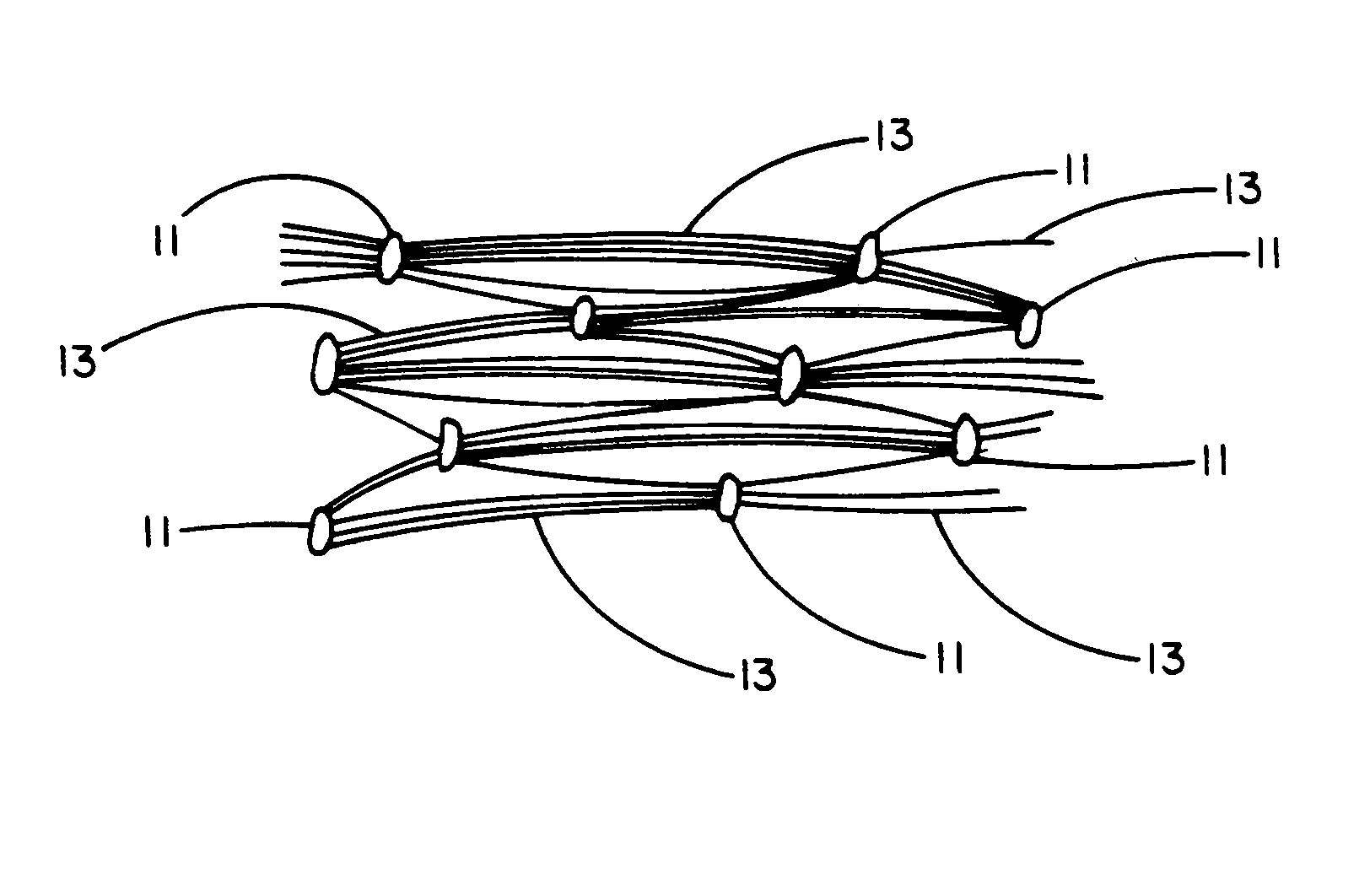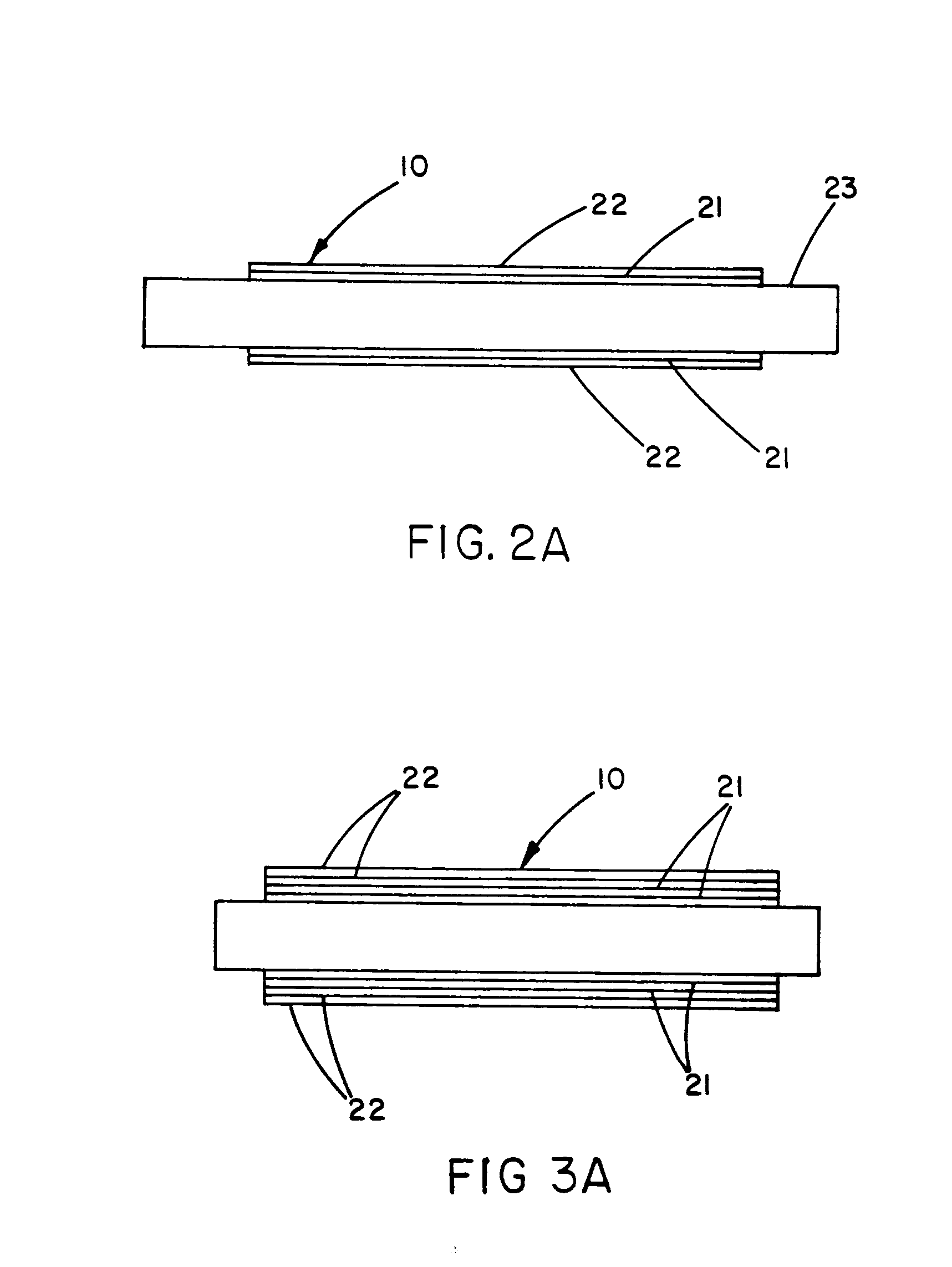Thin-Wall Polytetrafluoroethylene Tube
a polytetrafluoroethylene tube and thin-wall technology, applied in the direction of rigid containers, prosthesis, synthetic resin layered products, etc., can solve the problems of little memory, back to its full diameter does not retain the creases and wrinkles of its, etc., to reduce the risk of injury, strength and/or thinness of the tube
- Summary
- Abstract
- Description
- Claims
- Application Information
AI Technical Summary
Benefits of technology
Problems solved by technology
Method used
Image
Examples
example 1
[0071] A thin-wall tube was constructed by wrapping porous expanded PTFE film about an 8 mm diameter cylindrical stainless steel mandrel and then heating the film-wrapped mandrel. A 60 cm length of porous expanded PTFE film was wrapped around the surface of the mandrel with the fibrils of the film oriented parallel to the longitudinal axis of the mandrel. The film used was of about 0.03 mm thickness, 40 mm width, 40 micron fibril length, and about 0.3 g / cc density. The density of non-porous PTFE is about 2.2 g / cc; consequently the chosen film was about 86% porous. All film thickness measurements for each example were made with a Mitutoyo model no. 2804-10 snap gauge having a part no. 7300 frame, by placing a film sample between the measuring pads of the gauge and gently easing the pads into contact with the film sample until the pads were in full contact with the film sample under the full force of the spring-driven snap gauge. Film density values were based on the bulk volume of a ...
example 2
[0075] A bifurcated thin-wall tube was made by first constructing a flat mandrel 71 from 1.5 mm thick stainless steel as shown by FIG. 7; the mandrel 71 was cut into a Y-configuration wherein the trunk 73 was about 18 mm wide and legs 75 of the mandrel 71 were about 10 mm wide; the trunk 73 and legs 75 were each of about 80 mm length; the centerline 76 of each leg 75 diverged from the centerline 74 of the trunk 73 by an angle of about 15 degrees. The legs 75 were made as separate pieces and were retained to the trunk 73 in a removable fashion by the use of pins 77. All edges of the mandrel 71 were radiused.
[0076] The completed mandrel was placed between 2 layers of the same film used previously for the longitudinally-oriented film of Example 1. The fibrils of the layers of film were oriented parallel to the longitudinal axis of the trunk of the mandrel. The edges of the film were sealed together and trimmed around the perimeter of the flat mandrel in the same fashion as the edge of...
example 3
[0086] A thin-wall tube of the type described in Example 1 was constructed of a discontinuous FEP-coated film. Examination of the FEP-coated side of the film by scanning electron microscopy revealed FEP on only small portions of the nodes and fibrils at the surface of the film. It was estimated that less than 10% of the available node and fibril surface area exposed at the surface of the film was covered by FEP. The presence of the FEP adhesive thus had little or no adverse effect on the porosity of the porous PTFE layer of the film. This FEP-coated film was about 0.01 mm thick, of about 50 micron fibril length and had a density of about 0.3 g / cc.
[0087] The first layer 21 of film was applied by wrapping a 6 mm diameter cylindrical stainless steel mandrel 23 with two 12.5 mm wide strips of the FEP-coated porous expanded PTFE film as shown by the transverse cross section of FIG. 8. The edges 81 of the two layers of longitudinally-oriented film overlapped by about 3 mm. The PTFE side ...
PUM
| Property | Measurement | Unit |
|---|---|---|
| thickness | aaaaa | aaaaa |
| thickness | aaaaa | aaaaa |
| thickness | aaaaa | aaaaa |
Abstract
Description
Claims
Application Information
 Login to view more
Login to view more - R&D Engineer
- R&D Manager
- IP Professional
- Industry Leading Data Capabilities
- Powerful AI technology
- Patent DNA Extraction
Browse by: Latest US Patents, China's latest patents, Technical Efficacy Thesaurus, Application Domain, Technology Topic.
© 2024 PatSnap. All rights reserved.Legal|Privacy policy|Modern Slavery Act Transparency Statement|Sitemap



